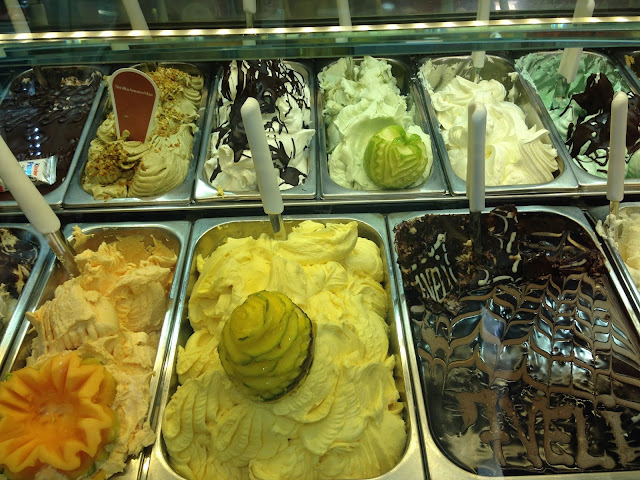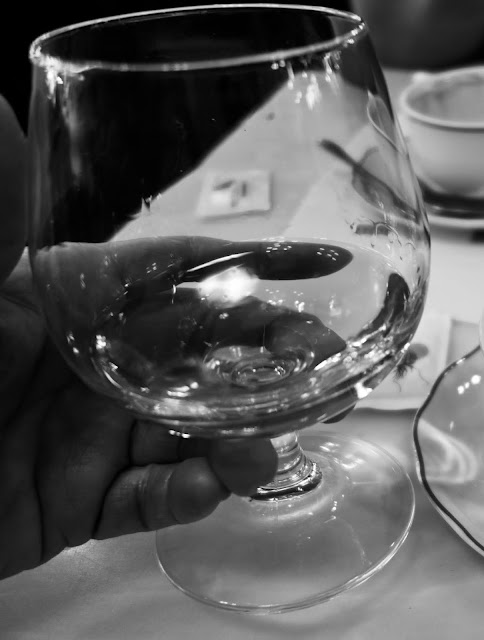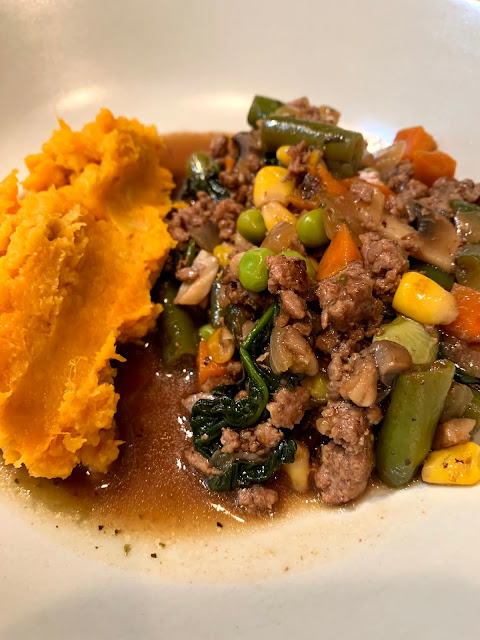 |
| Roman Gelato |
Ice Cream Dreams
There is a small, tiny actually, gelato shop on a side street in Rome. And when I walked in, I was greeted with “Buongiorno!,” said in a tender cadence that’s hard to master….and harder to forget. She smiled, as though greeting a relative and I damn near forgot about the gelato.
There was quite an array of flavors for a hole-in-the-wall shop. But, since pistachio was my mother’s favorite, wherever I go I tend toward the sweet flavor and aroma and the bright and surprisingly crunchy kick.
Gelato has a creamy softness that surpasses boyhood dreams, and that quickly becomes a cool savior on a sweltering afternoon. The smile and buongiorno added to the heavenly softness.
By the way, you might as well forget the written Italian word for good day. The spelling is only confusing. Buongiorno is pronounced as simply bonjourno, much like the French bonjour, but with the j floating like a friendly cloud with a “no” tacked on. Gelato, on the other hand, doesn’t need to be pronounced at all. Pointing a forefinger at the flavor makes you fluent.
American gelato? German gelato? No way. Gotta go to Rome.
Commercial American ice cream is hit or miss for me. Usually I can pass it up. When I was a kid, we used to make our own. We lived in Texas at the time of my first churning. Ripe peaches and heavy cream blew the socks off anything in the grocery store. It was a hand turned churn, and being a third grader, with arms the size of small, supple tree branches, it was a chore. A steel cylinder in the middle, fastened to the sides with a capped churning handle. Salted ice filled the rest of the brown, wooden bucket. My mom did the prep work, seeding and peeling the fuzzy yellow and orange peaches, then chopping them into edible chunks, to add to the custard that cooked on the stove. After the custard cooled, my work began.
“Momma, how long do I have to churn?”
“Until you can’t. The ice cream has to be firm.” But, of course mom and dad and I took turns. Afterwards came the interminable wait as mom pulled the paddle out of the steel container, sealed the ice cream in a glass bowl and put it in the freezer to ‘ripen.’ But, there was always some half frozen ice cream left on the paddle, which my little brother and I greedily shared, followed closely by a change of shirts and shorts. Wish I had the recipe.
American ice cream is a simple concoction of milk, cream, and sugar, sometimes with egg yolks added.
And then there’s the Turkish version, which on the street is served in a carefree series of twists and turns, and is unlike any ice cream you’ll ever taste.
Hard to expain. Better to let you see it!
Interesting semi facts:
Most popular ice cream flavor?
In America and much of the world, vanilla reins supreme, with chocolate a distant second, unless you go to Spain where chocolate is king, or when you visit Central and South America, where you’ll find the general preference is dulce de leche, similar to caramel, but even among those countries there are differences. In Mexico, for example, Neapolitan rules.
U.S. Ice cream with the highest fat content?
The FDA says ice cream must include at least 10% fat. However, ice creams in the U.S. sometimes contain much more, usually up to 15 or even 25%. So how can nonfat ice cream be called ice cream? Can’t be, not in the U.S. where it is labeled “frozen desert.”
How is Gelato different from ice cream?
Gelato uses less cream and more milk. Also ice cream often uses egg yolks in the custard. I know my mother did.
Oddly enough, more milk, less cream and no egg yolks leads to gelato being creamier and softer.
How do they make fat free ice cream (frozen deserts)?
Complex at best. A chemical problem that may include whey protein, use of other no fat or low fat milk products or other thickeners. Home recipes may include any number of starches. Corn starch often appears in the incredients.
Who invented the ice cream cone?
Around 1896, an Italian immigrant, Italo Marchioni opened a shop in New York City, selling his ice cream in cones. He was granted a patent in 1903.
Who invented ice cream?
Very probable it was the Chinese, using buffalo milk, way back around the turn of the last millennium, or even earlier. But, it began more or less independently in other places as well, such as Charles I in England. You may remember him as the king who lost both his kingdom and his head.
Ice cream came to America in the mid to late 1700s, with some famous names like Washington and Jefferson partaking. Interestingly, in the 18th Century in America, in some areas of the country it was illegal to sell “sinful” ice cream on Sunday.
Are there ice creams made from other than cow’s milk?
Turkish ice cream uses sheep’s milk, just to name one. There are also lots of non-dairy frozen desserts around the world. Is yogurt non-dairy? Certainly not! Yogurt is fermented milk. Wait a sec….fermented? So does yogurt contain alcohol? Yes, ethanol is present in a lot of foods.
So, now, as far as I’m concerned, it’s time to either pull out the churn or buy tickets to Rome.































